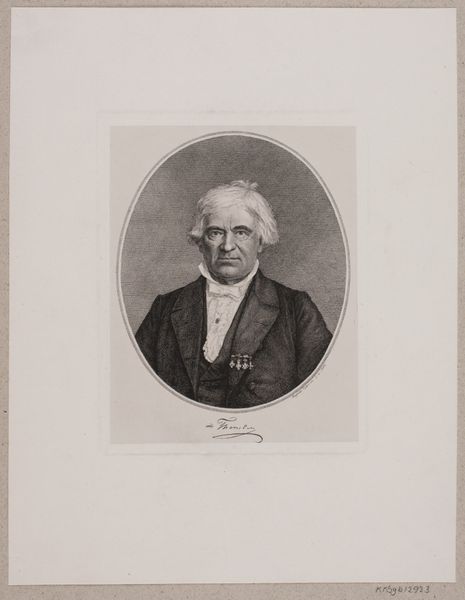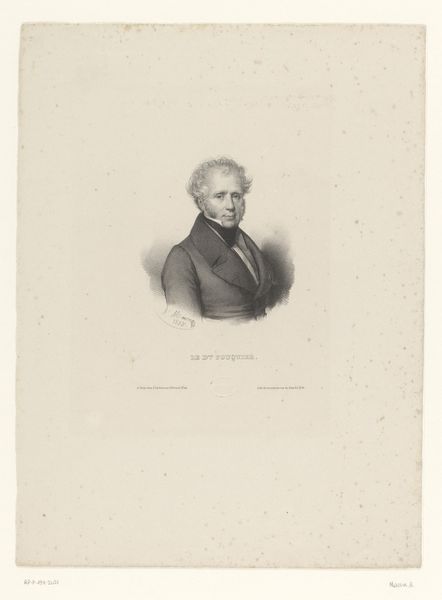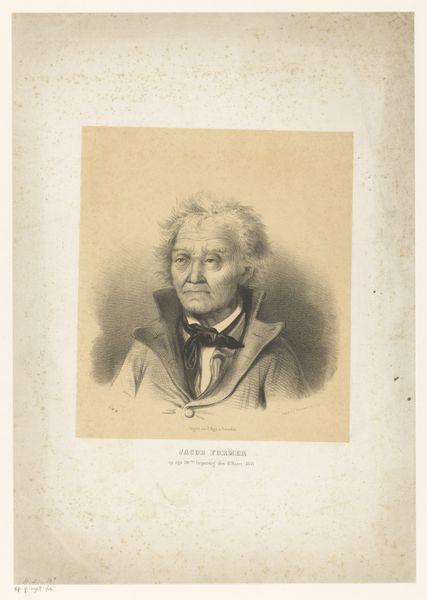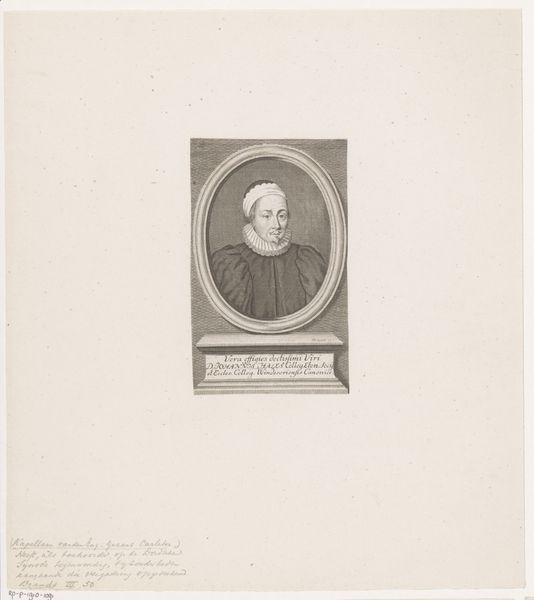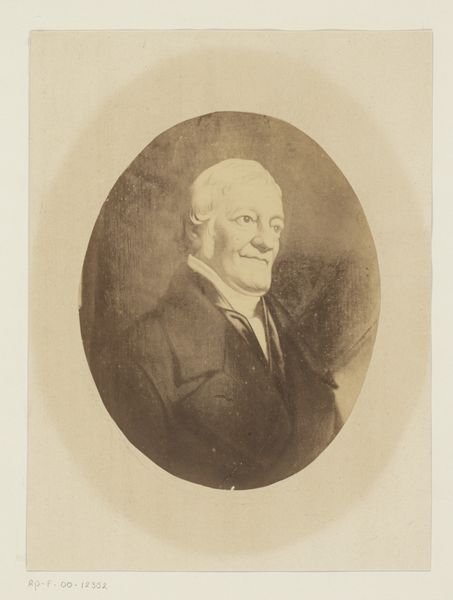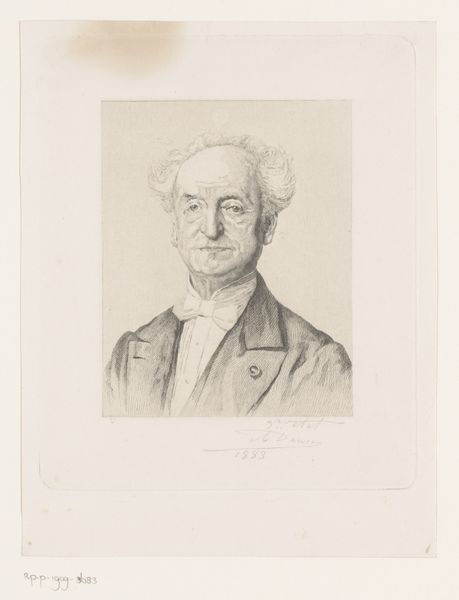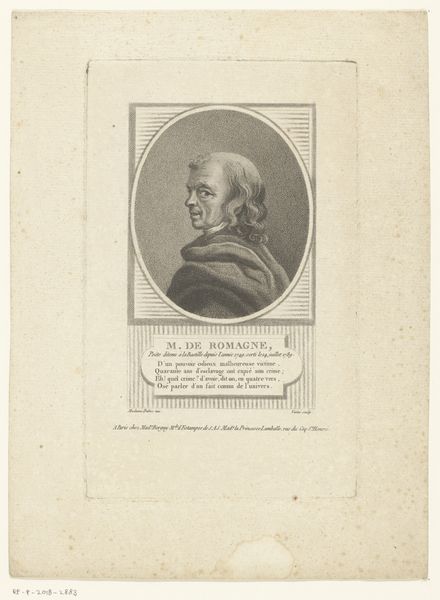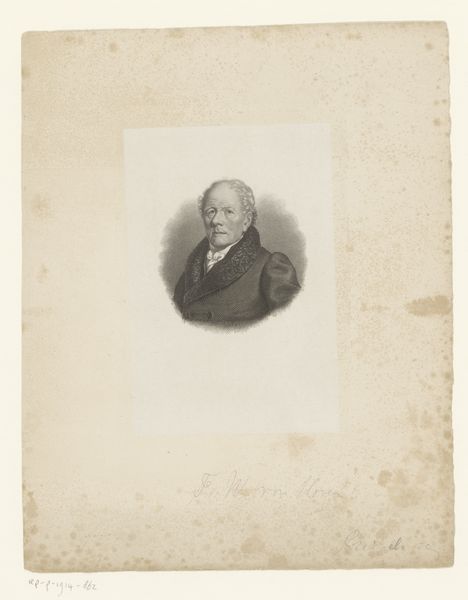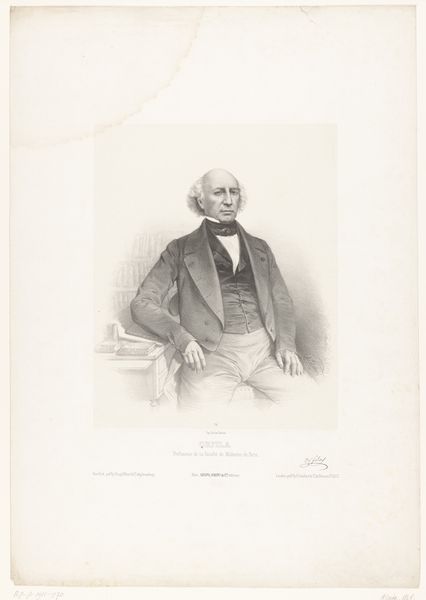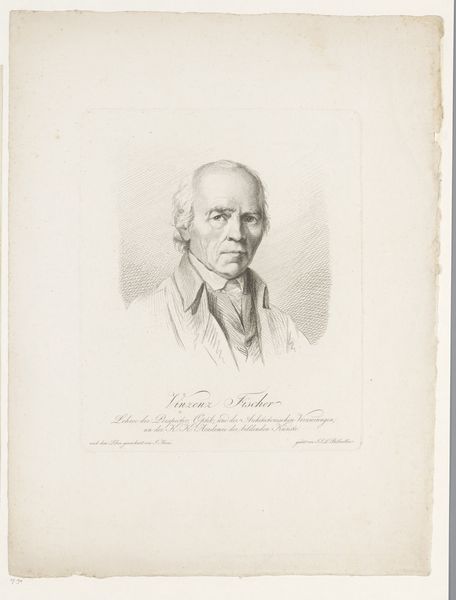
print, paper, photography
#
portrait
#
still-life-photography
# print
#
paper
#
photography
#
yellow element
Dimensions: 19.9 × 15 cm (image, oval); 34 × 26 cm (mount)
Copyright: Public Domain
Curator: Welcome. Here we have a photogravure print titled "Léon XIII," created between 1875 and 1879 by Goupil & Cie. Editor: You know, it’s strikingly…human. Beyond the papal vestments and stern gaze, I see a real person with lines etched by time and, probably, tough decisions. Does anyone else sense that under all the religious formality? Curator: Absolutely. The medium, photogravure, plays a huge role here. As a photographic printmaking process, photogravure elevated photography to the status of high art, lending it the richness and nuance of a traditional etching. The detail captured is compelling. In his time, Leo XIII was quite keen to harness visual media for the Catholic Church’s mission. Editor: There's an almost palpable texture to it, especially in the fabric. It's hard to believe that this is simply a flat surface printed on paper. This portrait seems less about deifying him and more about documenting him. Curator: Precisely! Images like this circulated widely and formed public perceptions of figures like Leo XIII. They're a crucial piece of the visual culture used to construct authority and project power in the 19th century. Note how Goupil & Cie, a commercial firm, leveraged photography's realism and printmaking’s artistry. They sold these widely, contributing to the image of the modern papacy. Editor: That context helps me better see how portraits became tools in shaping opinions back then, reaching so many people so fast through things like paper. Still, in the portrait itself, it feels like an appeal to relate, almost. The deep-set eyes especially... what did that gaze mean? Curator: It's a gaze directed both outward and inward, I think. A photographic portrait presented a new opportunity to capture a sense of individual presence like never before. Editor: Well, considering all that—the artistry, the historical game it played—it leaves you wondering. Curator: Indeed. Reflecting on all the dynamics at play reminds us how profoundly the papacy was adjusting to modernity during his time.
Comments
No comments
Be the first to comment and join the conversation on the ultimate creative platform.
